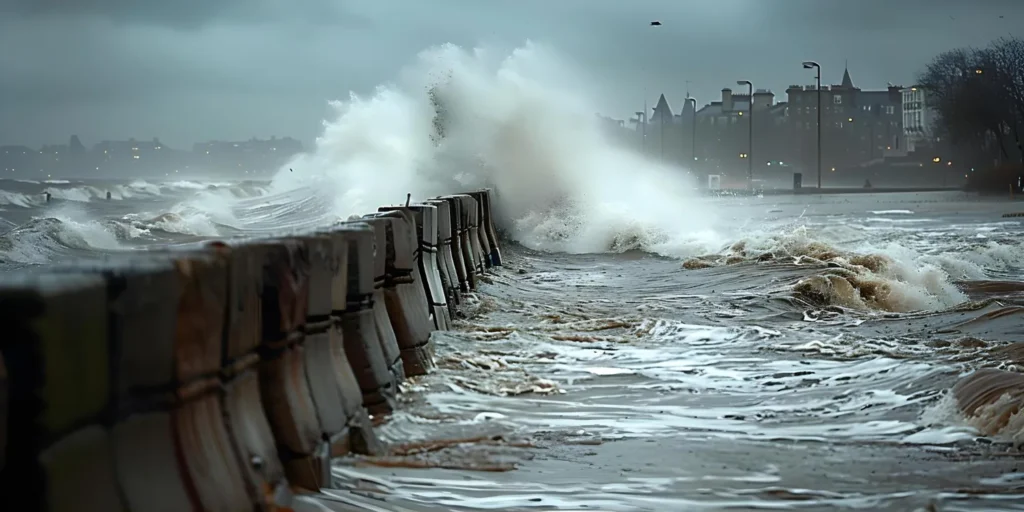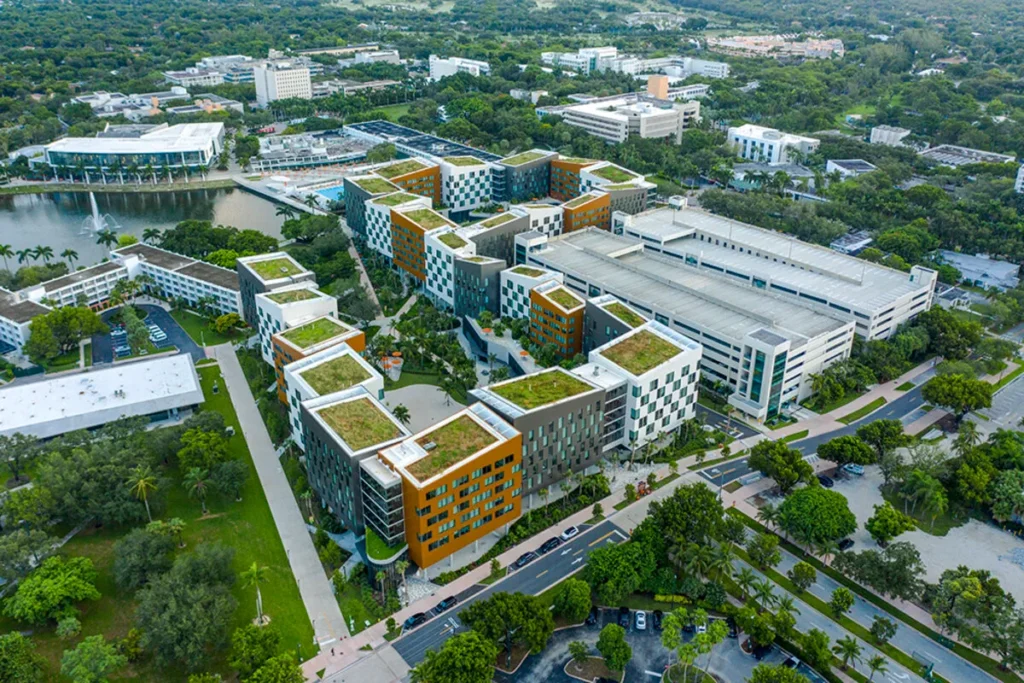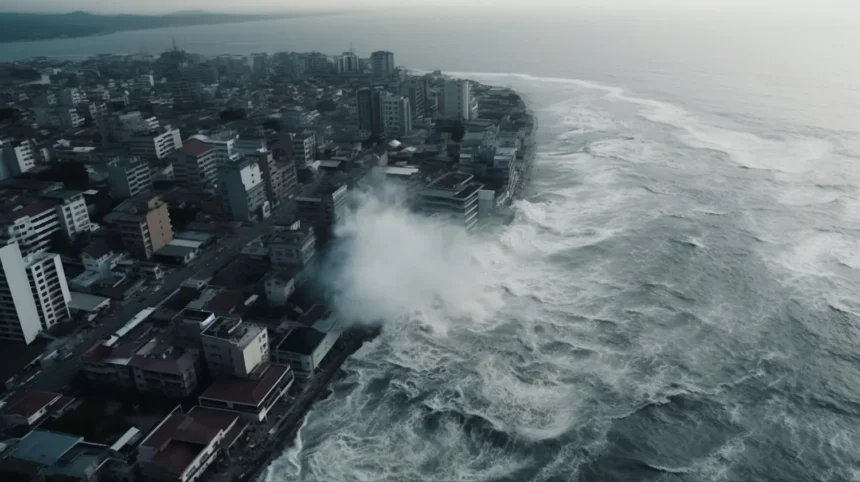Introduction
How Miami is Battling Sea-Level Rise Due to Climate Change? Is Miami, the vibrant city known for its beaches and nightlife, in danger of sinking? Rising sea levels caused by climate change threaten this coastal metropolis. Miami has already seen water levels rise by nearly 6 inches since the 1990s, and experts predict up to 17 inches of further rise by 2040. What does this mean for the city’s future, infrastructure, and the environment? You can learn more about the impact of the situation here and how Miami is battling it.
The impact of the rise in sea level on Miami is a pressing issue that calls for immediate action. The effects are far-reaching, from affecting local wildlife to threatening housing and business areas. But Miami is not standing idle. City officials and environmental experts are working together to implement strategies that can help mitigate this threat. How is Miami responding to this growing challenge? Learn about Miami’s response to climate change.
Read also: Top 5 Most Vulnerable US Coastal Cities to Climate Change
The Impact of Rising Sea Levels in Miami
Miami is at the frontline of the global battle against sea-level rise. The city’s coastal location and flat topography make it highly susceptible to flooding, storm surges, and coastal erosion. Here’s how the rising sea levels are affecting Miami:
- Increased Flooding: Flood events have become more frequent, particularly during high tides (often called “king tides”). Streets, neighborhoods, and vital infrastructure such as roads and hospitals are increasingly prone to flooding.
- Economic Consequences: Miami’s real estate, tourism industry, and infrastructure face billions of dollars in potential damages. The cost of maintaining and adapting the city will escalate significantly over the next decades.
- Saltwater Intrusion: The rising sea levels also cause saltwater to seep into Miami’s freshwater systems, threatening the city’s water supply and agricultural lands.
Species Affected by Climate Change in Miami
The impacts of climate change extend beyond human systems; Miami’s unique ecosystems and species are also under threat. Rising sea levels and changing temperatures disrupt the habitats of several species, leading to declining populations and loss of biodiversity. Some of the species affected include:
- American Crocodile: Found in coastal mangroves, the American crocodile struggles as saltwater intrudes further inland. Their nesting habitats are increasingly submerged, impacting breeding success rates.
- Loggerhead Sea Turtles: Sea turtles rely on Miami’s beaches for nesting. However, rising sea levels erode nesting grounds, threatening hatchling survival rates.
- Key Deer: A subspecies of white-tailed deer found in the Florida Keys faces habitat loss due to rising waters. The shrinking availability of freshwater sources also impacts their survival.
Miami’s biodiversity is part of its charm, but climate change threatens this delicate balance. It’s about saving human lives and protecting Miami’s unique wildlife and ecosystems from rising sea levels due to climate change.
Impacts on Infrastructure and Communities
Miami’s urban infrastructure is particularly vulnerable to rising sea levels. Low-lying neighborhoods such as Miami Beach, Little River, and Brickell have seen increased flooding due to sea level rise, even during regular high tides, known as “sunny day flooding.” The cost of these flooding events extends beyond temporary inconveniences. It threatens housing, businesses, and critical infrastructure, including roads and drainage systems.

By 2040, parts of Miami Beach may experience chronic flooding unless protective measures are taken. Rising waters are already affecting real estate, with homeowners and buyers increasingly concerned about property values in flood-prone areas. According to the Union of Concerned Scientists, over $1 billion in property value has already been lost due to frequent flooding in Miami-Dade County alone.
Miami Response to Climate Change and Sea-Level Rise
Government-Adopted Strategies
Miami has become a global case study in adapting to climate change. The city government and Miami-Dade County have developed several strategies to address sea level rise impacts and future challenges.
The city’s commitment to combating climate change is further strengthened through its 100 Resilient Cities network membership. This network provides resources to tackle the impacts of sea-level rise, such as creating a Chief Resilience Officer position. This officer coordinates Miami’s climate adaptation efforts and ensures the city’s infrastructure is designed to withstand future environmental pressures.
1. Resilient305 Plan
The Resilient305 Plan is a comprehensive initiative designed to bolster Miami-Dade County’s resilience against sea-level rise. The plan focuses on three core strategies:
- Adaptation: The city enhances infrastructure like roads and bridges to withstand flooding. It raises streets, installs pumps, and upgrades drainage systems in flood-prone areas like Miami Beach.
- Preservation: Restoring and protecting mangroves and wetlands as natural buffers against storms and rising waters.
- Community Engagement: Educating and involving residents in decision-making ensures that the public understands the risks and actively participates in resilience efforts.
2. Elevating Infrastructure and Flood Protection
Miami has been investing in stormwater management systems to reduce flooding risks. As part of these efforts:
- Pump Installations: Miami Beach, in particular, has installed over 70 pumps to manage water during high tides and heavy rains.
- Raising Roads: The city is raising roads and sidewalks, particularly in areas like Sunset Harbour, to keep infrastructure above predicted flood levels.
These infrastructure projects aim to keep Miami habitable but also come at a significant financial cost. Funding is sourced from local taxes, federal grants, and bonds. The Miami Forever Bond, for instance, allocates $400 million specifically for flood protection and sea-level rise mitigation. The bond protects vulnerable coastal areas by enhancing natural buffers like wetlands and mangroves.
3. Climate Resilience and Adaptation Task Force
“Miami cannot afford to wait for sea levels to stabilize. We must build a resilient city now that is prepared for what the future brings.” — Francis Suarez, Mayor of Miami
The Climate Resilience and Adaptation Task Force is an advisory body that guides Miami’s policies on climate change. This task force collaborates with scientists, environmentalists, and urban planners to develop strategies that minimize the impacts of sea-level rise. Recent policies include stricter building codes and requirements for new developments to be more flood-resistant.
Miami has also recognized the importance of enhancing its natural defenses. For instance, efforts are underway to restore and protect the city’s mangroves, which act as natural barriers against storm surges and help reduce coastal erosion. By investing in these ecosystems, Miami is creating a buffer zone that mitigates the effect of rising waters on urban development.
Another area of focus is Biscayne Bay. In collaboration with environmental organizations, government efforts aim to restore the bay’s health by reducing pollution and improving water quality. These actions ensure that the bay can continue to serve as a protective zone against flooding while supporting biodiversity.
Key Strategies of How Miami is Battling Sea-Level Rise Due to Climate Change
Here’s a comprehensive table outlining the key strategies for Miami’s climate resilience. This table summarizes the various approaches and ongoing efforts in Miami to mitigate the impacts of sea-level rise and enhance the city’s resilience against future climate threats.
| Strategy | Description | Goals | Examples of Actions |
| Resilient305 Plan | A comprehensive, regional strategy to increase Miami-Dade County’s resilience to climate change. | Adapt infrastructure, protect natural ecosystems, and engage communities. | ● Raising streets in flood-prone areas like Miami Beach ● Restoring mangroves and wetlands ● Community education initiatives |
| Infrastructure Elevation | Elevating critical infrastructure to prevent flood damage and improve stormwater management. | Mitigate flooding and enhance city durability. | ● Installing over 70 pump stations ● Raising roads in areas like Sunset Harbour |
| Miami Forever Bond | A $400 million funding initiative aimed at upgrading Miami’s infrastructure and flood defense systems. | Long-term flood protection and resilience funding. | ● Investment in green infrastructure projects ● Flood-proofing critical facilities |
| Climate Resilience and Adaptation Task Force | An advisory group guiding Miami’s climate policies based on scientific research and expert collaboration. | Develop evidence-based strategies and policies. | ● Updating building codes for flood resistance ● Enforcing stricter coastal construction regulations |
| Miami Forever Climate-Ready Program | Long-term plan focusing on sustainable and green infrastructure solutions to address future risks. | Sustainable development and flood mitigation. | ● Expanding green roofs and rain gardens ● Creating artificial reefs and restoring natural shorelines |
| Collaborative Efforts with Federal Agencies | Partnerships with federal bodies, like the Army Corps of Engineers, for large-scale coastal protection projects. | Secure funding and technical expertise for large projects. | ● Constructing sea walls ● Elevating levees ● Restoring mangrove forests and other natural barriers |
Future Plans and Projections for Miami’s Adaptation to Sea-Level Rise
As the battle against rising sea levels continues, Miami is looking toward plans to make the city more sustainable. What is Miami’s future response to rising sea levels due to climate change?
1. The Miami Forever Climate-Ready Program
The Miami Forever Climate-Ready Program extends current strategies, focusing on long-term resilience. It includes:
- Green Infrastructure Investments: Incorporating green roofs, rain gardens, and permeable pavements that reduce runoff and enhance water absorption.
- Natural Shoreline Protections: Increasing efforts to restore mangrove forests and create artificial reefs that absorb wave energy and reduce coastal erosion.
- Zoning and Building Regulations: Enforcing stricter zoning laws that limit construction in vulnerable coastal areas to minimize future damage and ensure that new buildings are flood-resilient.
Read also: Green Infrastructure: How U.S. Coastal Cities Fight Climate Change and Protect Their Future

2. Collaborative Efforts and Federal Partnerships
Miami also partners with state and federal agencies to secure funding and expertise for large-scale projects. The Army Corps of Engineers is involved in a project that includes constructing sea walls, elevating levees, and restoring natural barriers to protect against storm surges.
One example of future planning is the construction of elevated buildings. New city regulations mandate that buildings in flood-prone areas be constructed at higher elevations with flood-resistant materials.
Developers are also required to submit flood risk assessments before beginning new projects.
The South Florida Climate Change Compact, a regional collaboration that includes Miami-Dade County, is one of the most forward-thinking initiatives. The compact helps Miami and surrounding areas coordinate climate policy and implement solutions tailored to regional needs.
These plans signify a commitment to safeguarding Miami’s future but highlight the importance of collaborative efforts between government agencies, communities, and environmental groups.
4. The Role of Community Awareness and Involvement
While the government is central in mitigating the Miami climate change sea level rise, community involvement is equally crucial. Residents, businesses, and local organizations must be aware of the dangers and actively participate in adapting efforts. In recent years, Miami has seen a growing grassroots movement focused on climate resilience.
Community groups such as the Miami Climate Alliance have been educating the public about climate change’s impacts and encouraging local and state action. These groups help organize events like flood-preparedness workshops and encourage locals to adapt their homes and properties to handle the increased flooding risks.
Moreover, local businesses are increasingly adopting sustainable practices, such as installing green roofs, which absorb stormwater, and using renewable energy to reduce their carbon footprint. These efforts not only contribute to reducing the city’s vulnerability to flooding but also create a culture of climate-conscious living that benefits the environment in the long term.
5. Citizen Participation in Solutions
Residents also have a direct role in influencing local government decisions. Public hearings and community input sessions allow citizens to voice their concerns and support climate adaptation projects. For example, the public played a key role in shaping the Miami Forever Bond, advocating for projects prioritizing flood control, affordable housing in vulnerable areas, and environmental sustainability.
It’s essential that we, as residents, continue to stay informed and engaged. Miami’s future depends not only on government action but on the participation of every community member.
6. Long-Term Vision: Managed Retreat
One of the more controversial but forward-thinking strategies under consideration is managed retreat—moving communities away from the most flood-prone areas. While this is not yet being widely implemented, it is part of a longer-term conversation about how to best protect lives and property. As sea levels continue to rise, certain areas may become too expensive or impractical to protect, requiring a strategic retreat inland.
Though managed retreat is a difficult and emotionally charged solution, it is a reality that many coastal cities, including Miami, may face in the future. It’s important to start discussing this option to create a plan that prioritizes equity, ensuring that the most vulnerable populations are not left behind in the relocation process.
Key Takeaways
- Miami’s Vulnerability: The city’s geography and low-lying areas make it extremely vulnerable to sea-level rise and coastal erosion.
- Current Strategies: Miami is implementing the Resilient305 Plan, elevating roads, and investing in stormwater management systems to combat flooding.
- Ecological Impact: Due to climate change, species like the American crocodile and loggerhead sea turtles face habitat loss.
- Future Plans: The Miami Forever Climate-Ready Program and collaborations with federal agencies aim to strengthen Miami’s resilience.
Conclusion
Miami’s response to climate change and rising sea levels is one of the most comprehensive in the United States. From government-led infrastructure projects to community-driven sustainability efforts, the city is actively preparing for the future. However, the challenge remains significant, and ongoing adaptation will be necessary as climate conditions evolve.
While we cannot stop sea levels from rising, we can take steps to ensure that Miami remains a thriving, livable city. Through investments in infrastructure, protection of natural habitats, and community resilience, we are building a future where Miami is not just surviving the effects of climate change—but actively fighting back.
We cannot afford to lose the fight against sea-level rise. Every step we take today, from restoring mangroves to creating climate-adapted infrastructure, brings us closer to securing Miami’s future.
For more information, visit Miami-Dade Climate Action Strategy
Let’s work together to build a more resilient future for all!
FAQs
1. How fast is the sea level rising in Miami?
Due to the city’s geographic and climatic factors, sea levels around Miami are rising at a rate of about 1 inch every three years, faster than the global average.
2. What species are most at risk due to rising sea levels in Miami?
Species like the American crocodile, loggerhead sea turtles, and Key deer face significant threats from habitat loss caused by rising sea levels and saltwater intrusion.
3. What is the Miami Forever Bond?
The Miami Forever Bond is a $400 million funding initiative to build infrastructure that can withstand sea-level rise, such as raising roads and installing pumps.
4. How is Miami partnering with federal agencies to address sea-level rise?
Miami collaborates with federal agencies like the Army Corps of Engineers for large-scale projects like building sea walls and restoring natural coastal defenses.
5. Are Miami’s adaptation efforts enough to combat future sea-level rise?
While Miami’s current strategies are proactive, experts warn that continual adaptation and investment are necessary to manage the projected 2 to 6-foot sea-level rise expected by 2100.





